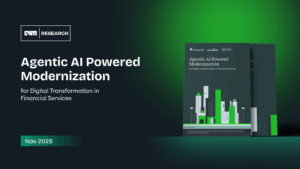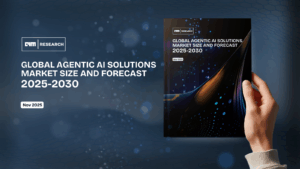Businesses increasingly recognize the untapped potential within their data, fueling a desire to elevate their data practices and revolutionize their organization’s measurement capabilities. This evolution involves traversing through stages of analytics maturity, progressing from descriptive to diagnostic, predictive, and, ultimately, prescriptive analytics. The goal is to shift from merely describing historical trends to predicting future outcomes, offering actionable recommendations, and optimizing those outcomes for sustained business success. Let’s delve into each stage of this transformative journey.
Descriptive Analytics
At the foundational level, organizations leverage descriptive analytics to gain insights into past events and performance. It answers the question of “what happened?” by summarizing and visualizing historical data, empowering businesses to comprehend trends and make informed decisions based on established patterns.
Descriptive analytics is a foundational aspect of data analysis, focusing on revealing past occurrences using historical data to uncover patterns, trends, and correlations. It serves as a tool to address inquiries like past sales figures, customer demographics, top-selling products, and popular website pages. Its primary role lies in pinpointing both strengths and weaknesses within a business while shedding light on trends that could shape future predictions.
It marks the initial phase in the data analytics journey as a precursor to more sophisticated analytical methods such as predictive and prescriptive analytics. The advantages of employing descriptive analytics are multifaceted. It aids in informed decision-making by offering insights into past performances, highlighting areas of inefficiency for enhanced productivity, optimizing customer service through understanding customer behaviour, and uncovering innovation opportunities for product or service enhancements.
Diagnostic Analytics
The diagnostic stage builds upon descriptive analytics to understand the “why” behind observed trends and events. Organizations identify the factors influencing outcomes by delving deeper into data correlations and conducting root-cause analyses. This stage goes beyond merely describing data, providing insights into the reasons behind specific patterns.
Diagnostic analytics delves into uncovering the underlying causes of issues within a business. Analyzing historical data for patterns and relationships addresses crucial questions such as the reasons behind sales declines, customer churn, or website performance issues. This type of analytics spotlights weaknesses and pinpoints problems that hinder business performance.
As the next step after descriptive analytics, diagnostic analytics offers a more profound comprehension of data, building upon the foundational insights gained previously. Its advantages encompass swift problem-solving by identifying core issues, thus enhancing problem-resolution efficiency. Additionally, it aids in streamlining operations by pinpointing areas of inefficiency, elevates customer service through understanding trends, and fuels innovation by spotlighting opportunities for product or service enhancements.
Predictive Analytics
Predictive analytics involves foreseeing future trends by analyzing historical data and employing statistical algorithms. It empowers proactive decision-making by anticipating forthcoming events. This field utilizes advanced statistical modelling and machine learning to make informed predictions, enabling organizations to strategize based on these insights.
Its applications span various methodologies and technologies like big data, data mining, machine learning, and mathematical processes. Predictive analytics enables the detection of trends and forecasts future occurrences based on specified parameters. By deciphering patterns within data, it identifies risks and opportunities, aiding informed decision-making across supply chain and procurement domains.
Predictive analytics is the strategic linchpin for organizations aiming to glean insights and shape their future direction. By leveraging cutting-edge technologies like big data and machine learning, predictive models mine vast amounts of data, detecting intricate patterns that may otherwise remain unseen. These models empower businesses to forecast potential risks and opportunities, anticipate customer behavior, optimize operations and fine-tune strategies for enhanced competitiveness. The escalating market traction for predictive analytics, projected to triple value by 2028, underscores its pivotal role in steering data-informed decision-making across industries.
Prescriptive Analytics
Prescriptive analytics represents the zenith of data analytics, forecasting future outcomes and offering actionable insights on optimizing those results. This advanced form of analytics leverages machine learning algorithms to guide decision-makers with precise actions, providing strategic counsel for revenue maximization and overall business triumph.
The significance of prescriptive analytics for businesses lies in its capacity to scrutinize past performance and map out pathways to desired future outcomes. This analytic form enables businesses to strategize and determine actionable steps toward achieving specific goals, which is particularly crucial for enterprises seeking a turnaround from low-performance metrics. It offers actionable strategies based on historical data, projecting timelines and suitable courses of action for reaching set objectives.
As businesses evolve their data practices, it is essential to understand the different stages of analytics maturity and how they can be leveraged to drive business success. By embracing the power of descriptive, diagnostic, predictive, and prescriptive analytics, organizations can unlock the full potential of their data and make informed decisions that drive growth and innovation.
Data analytics evolves through these four stages, each contributing to a deeper understanding of data and its potential applications. To illustrate what can be gained from mastering each stage, let’s explore a few example use cases.
Use Case 1: E-commerce – Better Understand the Customer Journey
In the realm of e-commerce, understanding the customer journey is pivotal for success. Each stage of analytics serves a distinct purpose in unravelling and optimizing this journey:
Descriptive Analytics: This phase involves summarizing historical customer interactions and preferences. Here, businesses aggregate and analyze data from past customer actions, providing a comprehensive overview of what has occurred. For e-commerce, this might entail understanding the most purchased items, popular browsing times, or frequently visited sections of the website.
Diagnostic Analytics: Going a step deeper, diagnostic analytics delves into the reasons behind customer actions. It identifies the ‘why’ behind trends revealed in descriptive analytics. For instance, it might explain why certain products are more popular during specific seasons or certain demographics prefer certain marketing campaigns.
Predictive Analytics: This stage uses historical data and sophisticated algorithms to forecast future customer behaviour and preferences. E-commerce businesses can anticipate trends, customer buying patterns, and potential shifts in demand. Predictive analytics suggest which products are likely to sell well in the upcoming season or which marketing strategies will yield better results.
Prescriptive Analytics: The most advanced stage, prescriptive analytics, goes beyond predicting future behaviour. It offers recommendations and strategies for personalized customer interactions and experiences. In an e-commerce setting, this could include proposing customized product suggestions using browsing history or tailoring marketing material according to individual customer preferences.
Walmart is a leading e-commerce site that uses analytics to improve the customer journey. For example, it uses descriptive analytics to analyze customer behaviour and preferences, diagnostic analytics to identify the factors influencing customer decisions, predictive analytics to forecast future trends and outcomes, and prescriptive analytics to provide actionable recommendations on optimizing those outcomes.
Use Case 2: Operations – Improve Operational Efficiency
In the realm of operations, analytics plays a pivotal role in enhancing efficiency:
Descriptive Analytics: This phase begins by identifying inefficiencies and areas for improvement based on historical operational performance. Organizations use this data to get an overview of their operations, highlighting where they might have faced challenges or encountered bottlenecks. For instance, it might reveal patterns of delays in production or inefficiencies in supply chain logistics.
Diagnostic Analytics: Beyond pointing out inefficiencies, diagnostic analytics helps organizations delve deeper into operational challenges. It enables a more profound understanding of why certain inefficiencies occur. This phase might uncover root causes such as machinery breakdowns, supply chain disruptions, or process inefficiencies within specific departments.
Predictive Analytics: Moving into the realm of forecasting, predictive analytics helps anticipate potential future bottlenecks or issues within operations. By analyzing historical data, machine learning algorithms forecast when and where issues might arise. For example, it might predict when equipment maintenance is required or forecast increased demand periods to prevent stock shortages.
Prescriptive Analytics: Finally, prescriptive analytics offers actionable recommendations for optimizing processes and resource allocation to achieve better operational outcomes. It uses insights from previous stages to suggest specific actions. This might involve suggestions for process reengineering, reallocation of resources, or adopting new technologies to streamline operations.
United Parcel Service (UPS) utilizes analytics to streamline logistics and supply chain operations. By employing predictive analytics, UPS forecasts package delivery volumes optimizes delivery routes, and minimizes fuel consumption, resulting in substantial operational effectiveness and financial savings.
Use Case 3: Risk Mitigation – Identify & Avoid Risks
Descriptive Analytics: This stage kicks off by examining historical data to reveal patterns related to past risks. By analyzing historical risk-related data, organizations can identify trends or patterns that have led to adverse outcomes or potential vulnerabilities. For instance, it might reveal patterns in financial transactions that have historically led to losses or patterns in cybersecurity breaches.
Diagnostic Analytics: Building upon descriptive analytics, this phase aims to uncover the root causes behind previous risk events. It delves deeper into understanding why these risks occurred. For instance, it might discover that financial losses were due to inadequate risk assessment procedures or cybersecurity breaches due to outdated software systems.
Predictive Analytics: Moving towards forecasting, predictive analytics anticipates potential risks based on historical patterns and identifies root causes. Machine learning algorithms examine past data to make forecasts when similar risks might arise. For instance, it might forecast periods when market fluctuations could lead to financial risks or predict times of vulnerability to cyber threats.
Prescriptive Analytics: Finally, prescriptive analytics recommends specific actions to mitigate or avoid identified risks. Leveraging insights from the previous stages, prescriptive analytics suggests proactive measures or strategies to minimize or eliminate these risks. For example, it might recommend updated security protocols, changes in investment strategies, or enhanced risk management policies.
Ford Motor Company uses predictive analytics to identify potential vehicle quality issues. By analyzing data from sensors and other sources, Ford can predict potential defects and proactively address them before they become major issues, ultimately diminishing recall risks and enhancing customer contentment.
Conclusion
Mastering the evolution from descriptive to prescriptive analytics equips organizations with the tools to extract meaningful insights, make informed decisions, and optimize outcomes across various facets of their organization. This transformative journey unlocks the true potential of data, positioning businesses for agility, innovation, and sustained success in a rapidly evolving landscape. It’s not just an evolution; It’s essential for companies aiming to excel in the data-centric age.





